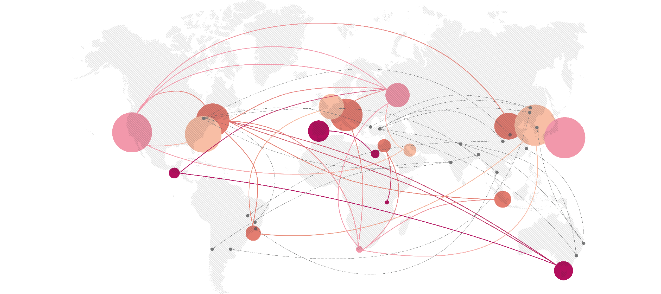Startups are a crucial element of a country’s innovation ecosystem
As agents of change, startups bring about new technological innovation, disrupting the status quo and potentially creating wealth in the regions they operate. Unfortunately, their success is not given. Their abilities to bring their inventions to the market are subject to many external factors. Even after surviving the first few tumultuous years and establishing themselves as profitable businesses, startups’ ability to grow and scale-up is dependent on volatile consumer demand and market conditions.
WIPO’s recent work provides useful lessons on how startups can grow and continue to be competitive
Drawing on millions of patent documents and scientific publications, the latest World Intellectual Property Report edition on The Geography of Innovation: Local Hotspots, Global Networks identifies hotspots with a high density of innovative activities worldwide. It shows how there are more innovative regions in the world and that these regions are increasingly connecting to one another than before.
Figure 1 : More regions of the world are collaborating with one another in pursuit of innovation

Location matters: chose a vibrant innovation ecosystem when scaling-up
There are more and more countries innovating. This globalization of innovation results from the increasingly international integration of economic activities as well as the rising importance of knowledge in the economic process.
However, this geographical spread is often concentrated to the urban regions of those countries. Most of the global innovation hotspots – defined as areas with a high density of innovative activities – tend to be located in large, urban, cosmopolitan and prosperous areas of the world.
One of the most common explanations for this concentration is the economic forces that relate to pools of skilled labour, market scale and knowledge spillover present in these areas. Simply put, a highly skilled worker will search for work in regions where there is a strong presence of innovative firms. Innovative firms tend to attract other innovative firms. This is because by locating close to one another, the firms would be able to benefit from the knowledge spillover – where knowledge can “spill” from one firm to another. Moreover, the presence of innovative firms in a region depends on its proximity to strong research institutions that specialize in science, engineering and technology. In addition, the firms would be able to take advantage of the economic factors that ensure smooth business operation such as access to financing and infrastructure, to name a few.
Start-up that are embedded in this vibrant innovation ecosystem will have access to the pool of skilled labour, benefit from the knowledge spillovers of highly innovative firms, and can take advantage of the existing infrastructures necessary to support their growth.
Find a partner to link into a global innovation network
Vibrant innovative ecosystems interact with one another. Over the past few decades, the frequency and volume of these interactions have increased, reflecting the shift in how innovation takes place and emphasizing the importance of collaboration in the world today.
Tapping into an existing global innovation network is another way for startups to scale up. Depending on the industry and the knowledge complementarities needs, startups should find partners that belong to global innovation networks.
Global innovation network refers to a globally organized web of collaborations between organizations – firms and/or academic or research institutions – engaged in knowledge production that results in innovation. Most of these organizations are located in innovation hotspots, as described above. They may even be institutions championed by national governments.
Startups that are able to collaborate with those connected to existing global innovation networks would be able to tap into specialized knowledge developed overseas, build on them and remain competitive. In addition, they would be able to overcome some of the hurdles in acquiring knowledge not readily accessible in their regions.
By Intan Hamdan-Livramento
